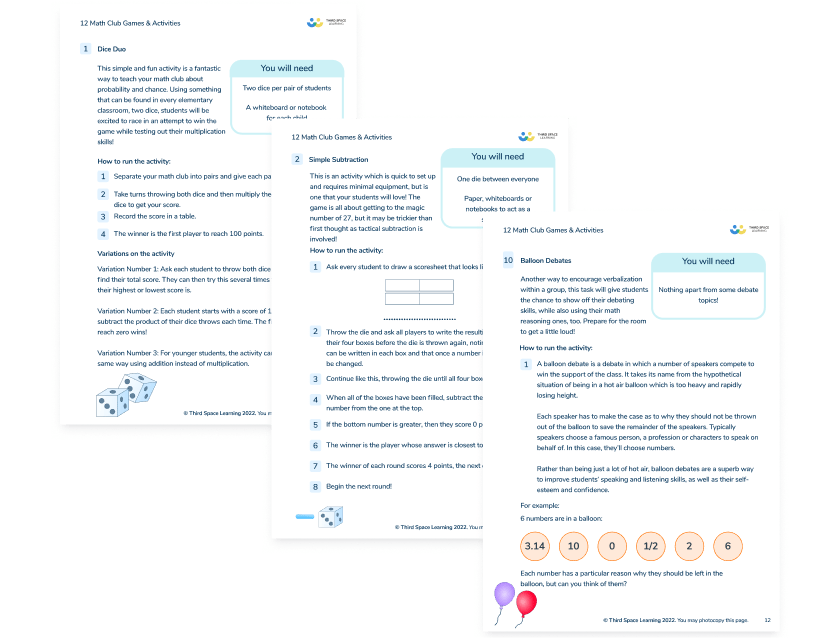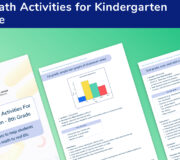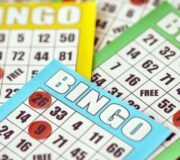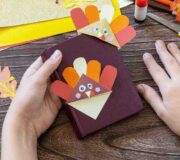Fun Field Day Math Activities for Upper Elementary: Problem Solving in Context
Field day is a great opportunity for collaboration, celebration… and math! It’s one of those days that everyone remembers at school throughout their elementary years. Hot (okay, often drizzly, weather), the nervousness of walking up to the sports field and the excitement of cheering on other competitors.
Here are our suggestions for some fun math investigations you can do while preparing for and during field day in upper elementary grade levels.
Summer Math Activities Grades 1 to 5 Pack
Keep math a focus, even over the summer, with these fun math games and activities. Do these 20 games during field day with your grade 1 to 5 students!
Download Free Now!Before Field day
1. Buy & sell ice cream
Get your students to start off by surveying the flavors of ice creams other students like to eat. They can then use this information to estimate how many ice creams they need to purchase to sell at field day in order to make a profit and work out how much they can buy/sell them for.
And yes, get them to actually sell some ice cream if the weather is good and they can then follow up this work after field day by working out their profit and drawing graphs of the most popular ice cream. Bonus: you can buy yourself a treat on a warm day while helping your students learn!
2. Estimation & predictions
Whether it is in pairs, groups or with the whole class, discussions are a key part of mathematical learning for students and a great way for children to engage with one another while listening to each other’s opinions.
Ask your students prompting questions to initiate discussions, such as:
- Why do runners start their race at different starting points on the sports field?
- Estimate how much distance is between number 1 and number 8 starting points on the sports field.
- How long do you think it would take a 3rd-grade student to run the 200m race? A 5th-grade student to run the 200m race? Why is there a difference between their estimations?
If they have pair or group discussions, come together as a class afterward and lead a whole class discussion to hear everyone’s opinions. If the class can come to some conclusions at the end of the discussion, after field day, they could then compare their predictions with what really happened as well.

Meet Skye, the voice-based AI tutor making math success possible for every student.
Built by teachers and math experts, Skye uses the same pedagogy, curriculum and lesson structure as our traditional tutoring.
But, with more flexibility and a low cost, schools can scale online math tutoring to support every student who needs it.
Find out more
On field day
3. Math is all around us
During field day there can be a lot of waiting around for competitors in between races and results. Why not make this a learning opportunity for your students?
They could take photos on tablets of where they see math during the day (you could give them a target, for instance of 5 photos) or they could write down where they see math in different sports events throughout the day by filling in a table. These photos/notes can then be discussed in class at a later date.
4. Heading back out onto the track
Once the excitement of the day itself is over, it is the perfect time to get stuck into some field day math while the memory of the event is still fresh in students’ minds.
The running track presents the perfect opportunity to test out math skills, and no matter the length of the one at your school, you will be able to ask students questions such as:
- How long is the track in meters and feet?
- How many times would you have to run up and down (or around) the track to run an Olympic 800m/1500m race?
- If a student is 5 ft tall, how many times would they be able to fit laying down on the running track?
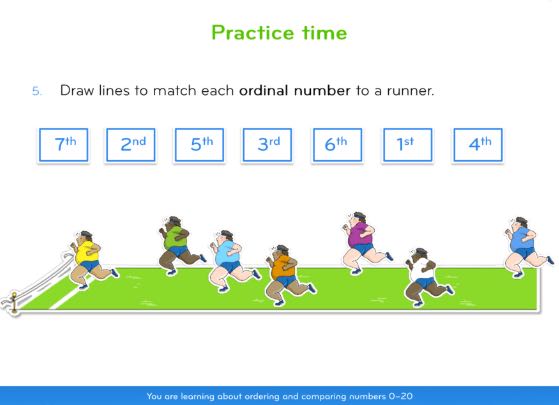
5. Seeing how the teachers compare to Usain Bolt
We know how competitive the teachers’ race can get on field day, and when you have the full force of your class behind you cheering you on, anything could happen.
Well, almost….
A fun task for your students could be to compare the times from the teacher race to the time set by Usain Bolt when he ran his famous 9.58 seconds world record 100m race.
Which teacher was the closest to reaching that time, and how far behind were they? (don’t worry, we’re not expecting miracles here.)
Bolt’s average speed in the race was 27.79mph, can your students work out your top speed too and see how it compares?
*If there is not a teacher race at your school, then this can be substituted for a parent race!
Looking for more? We’ve got lots more fun math activities here for you, including 13 outdoor math activities, 19 fun end-of-term math activities, and our favorite fun math lessons.
After field day
6. Data-led class activities
There are lots of engaging class activities that can be completed after field day is over, even better if these activities include personal data that the students have collected themselves or can relate to.
Activities to try out with your class could be:
- Comparing average race times between schools within the school or between heats.
- Ordering race times involving decimals.
- Working out the total distance run by students throughout the day.
- Working out how many degrees are in a javelin or shot put pitch.
- Drawing graphs of race times or any other great data your students have collected.
7. Sports day infographics
A great spring term activity is always to design a nice colorful poster, but why not make this poster more academically related as well as cross-curricular? Infographics provide more in-depth information for presentations while presenting this information in an accessible and engaging way.
For examples of infographics, take a look at Mr Reddy’s blog on infographics here.
Do you have students who need extra support in math?
Skye—our AI math tutor built by experienced teachers—provides students with personalized one-on-one, spoken instruction that helps them master concepts, close skill gaps, and gain confidence.
Since 2013, we’ve delivered over 2 million hours of math lessons to more than 170,000 students, guiding them toward higher math achievement.
Discover how our AI math tutoring can boost student success, or see how our math programs can support your school’s goals:
– 3rd grade tutoring
– 4th grade tutoring
– 5th grade tutoring
– 6th grade tutoring
– 7th grade tutoring
– 8th grade tutoring
The content in this article was originally written by a former secondary teacher David Leighton and has since been revised and adapted for US schools by elementary math teacher Christi Kulesza.
